Best Greenhouse Techniques for Maximizing THCA Content
Cannabis cultivation has evolved dramatically over the past decade, with growers increasingly focused on maximizing THCA content through precise environmental control and advanced cultivation techniques. THCA (tetrahydrocannabinolic acid) represents the raw, non-psychoactive precursor to THC, offering unique therapeutic benefits and serving as a crucial quality indicator for premium cannabis products.
The greenhouse environment provides unparalleled control over growing conditions, making it the ideal setting for THCA optimization. Unlike outdoor cultivation, where environmental factors remain largely unpredictable, or indoor growing with its high energy costs, greenhouse cultivation strikes the perfect balance between control and efficiency.
Modern greenhouse growing techniques have revolutionized how cultivators approach cannabinoid production. By leveraging natural sunlight while maintaining precise control over temperature, humidity, and airflow, growers can create optimal conditions that promote maximum resin production and THCA accumulation.
The optimization goals for THCA maximization extend beyond simple environmental control. Successful cultivation requires a holistic approach that integrates genetics, nutrition, training techniques, harvest timing, and post-harvest processing. Each element plays a crucial role in determining final THCA concentrations, with the greenhouse environment serving as the foundation that enables precise manipulation of all variables.
Research indicates that THCA content can vary dramatically based on cultivation methods, with properly managed greenhouse operations achieving THCA levels 20-30% higher than traditional growing methods. This significant improvement translates directly to enhanced product quality, increased market value, and superior therapeutic efficacy.
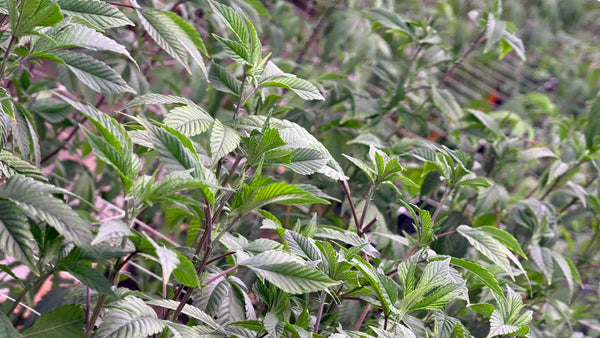
Strain Selection: The Foundation of High THCA Production
Selecting appropriate genetics forms the cornerstone of any successful THCA maximization program. High THCA strains possess specific genetic markers that predispose them to elevated cannabinoid production, making variety selection arguably the most critical decision in the cultivation process.
Premium THCA-producing strains typically exhibit several key characteristics: dense trichome production, extended flowering periods, and robust resin development. Varieties such as White Widow, Northern Lights, and OG Kush have consistently demonstrated exceptional THCA production capabilities when grown under optimal greenhouse conditions.
The breeding considerations for THCA optimization involve understanding the genetic mechanisms that control cannabinoid synthesis. THCA synthase enzymes, responsible for converting cannabigerolic acid (CBGA) into THCA, are genetically determined. Strains with high THCA synthase expression will naturally produce more THCA, regardless of growing conditions.
Modern breeding programs focus on stabilizing high THCA traits while maintaining other desirable characteristics such as pest resistance, structural integrity, and terpene profiles. Phenotype selection becomes crucial, as even within the same strain, individual plants can exhibit significant variation in THCA production potential.
Genetic testing and cannabinoid profiling have become standard tools for serious THCA cultivation programs. By analyzing potential mother plants for THCA production capabilities, growers can identify superior genetics before investing time and resources in full-scale cultivation.
The interaction between genetics and environment cannot be overstated. Even the most promising high THCA genetics will underperform in suboptimal growing conditions, while inferior genetics may surprise with exceptional performance under perfect environmental management.
Nutrient Management: Feeding for Maximum Resin Production
Optimal nutrition serves as the fuel for THCA synthesis, making nutrient management a critical component of any cannabis cultivation method focused on maximizing cannabinoid content. The relationship between nutrient availability and THCA production involves complex biochemical pathways that require precise timing and balanced feeding programs.
Macronutrient Balance for THCA Production
Nitrogen management during flowering represents one of the most crucial aspects of THCA optimization. While nitrogen is essential for healthy plant development, excessive nitrogen during late flowering can actually inhibit THCA production by promoting continued vegetative growth at the expense of resin development.
The ideal nitrogen reduction schedule begins approximately three weeks before anticipated harvest, gradually tapering from 150-200 PPM to 50-75 PPM during the final two weeks. This controlled nitrogen stress triggers the plant's survival mechanisms, redirecting energy toward resin production and THCA synthesis.
Phosphorus requirements increase significantly during peak flowering, with optimal ranges between 40-60 PPM. Phosphorus directly supports ATP synthesis, providing the energy required for THCA production pathways. Premium results often require specialized flowering boosters containing high phosphorus concentrations and supportive micronutrients.
Potassium plays a dual role in THCA optimization, supporting both enzymatic functions and osmotic regulation. Maintaining potassium levels between 180-220 PPM throughout flowering ensures proper cellular function while supporting the transport mechanisms that deliver precursor compounds to developing trichomes.
Micronutrient Requirements for Resin Development
Magnesium deficiencies can severely impact THCA production by limiting chlorophyll synthesis and overall photosynthetic efficiency. Maintaining magnesium levels between 40-60 PPM ensures optimal photosynthetic rates, providing the energy foundation for robust resin production.
Calcium availability affects cell wall development and enzymatic function, directly impacting trichome formation and THCA accumulation. Optimal calcium levels range from 100-150 PPM, with particular attention paid to calcium-magnesium ratios that support proper nutrient uptake.
Iron, zinc, and manganese serve as cofactors in THCA synthesis pathways, making micronutrient management crucial for maximum production. Chelated forms of these nutrients ensure availability even in challenging pH conditions common in intensive greenhouse cultivation.
Organic vs. Synthetic Nutrient Programs
The organic versus synthetic debate takes on special significance in THCA cultivation, with each approach offering distinct advantages. Organic programs excel at supporting beneficial microbial populations that enhance nutrient uptake and produce secondary metabolites that may boost THCA production.
Synthetic nutrient programs provide precise control over elemental availability, enabling rapid adjustments based on plant response and tissue analysis results. Many successful THCA maximization programs combine both approaches, using organic base nutrients supplemented with synthetic precision boosters during critical development phases.
Living soil systems, incorporating beneficial bacteria and mycorrhizal fungi, have shown particular promise for THCA production. These biological partnerships enhance nutrient uptake efficiency while producing plant growth regulators that may stimulate resin production pathways.
Training Techniques: Optimizing Plant Architecture for Resin Production
Physical training techniques directly impact resin production by manipulating plant architecture, light distribution, and hormonal responses. Proper training maximizes the number of prime flowering sites while ensuring adequate light penetration throughout the canopy.
Low Stress Training (LST) for THCA Optimization
Low stress training techniques gently manipulate plant growth patterns without causing significant stress that might impact THCA production. LST begins early in vegetative growth, gradually bending main branches to create horizontal growth patterns that expose more flowering sites to direct light.
The horizontal training approach stimulates apical dominance redistribution, encouraging multiple main colas instead of single dominant stems. This architectural change dramatically increases the total number of prime flowering sites capable of producing high THCA concentrations.
Timing LST implementation proves crucial for maximum effectiveness. Beginning LST during early vegetative growth allows plants to adapt gradually, minimizing stress responses that might impact later THCA development. Most successful programs implement LST over 2-3 weeks, making incremental adjustments rather than dramatic changes.
Screen of Green (SCROG) Implementation
SCROG techniques represent the gold standard for maximizing flowering site efficiency in greenhouse environments. By training plants through horizontal screens, growers create uniform canopies that optimize light distribution and promote consistent THCA development across all flowering sites.
Screen placement typically occurs 12-18 inches above the growing medium, with 4-6 inch square openings that accommodate branch training. The screen installation timing coincides with the transition to flowering, allowing vegetative shoots to fill screen openings before vertical growth acceleration.
Proper SCROG management requires daily attention during early flowering, as rapid vertical growth must be continuously redirected through screen openings. This intensive management pays dividends through dramatically increased yields and more consistent THCA concentrations across all flowering sites.
Selective Pruning for Enhanced Resin Development
Strategic pruning techniques remove lower flowering sites that receive insufficient light, redirecting plant energy toward prime colas capable of maximum THCA production. The selective removal of "larf" or popcorn buds concentrates resources in areas with optimal light exposure and airflow.
Defoliation timing proves critical for THCA optimization, with most successful programs implementing major defoliation sessions during early flowering and again at week 3-4 of the flowering cycle. Removing excess fan leaves improves light penetration while reducing humidity buildup that might encourage mold development.
Apical pruning techniques, including topping and fimming, increase the number of main branches while maintaining manageable plant heights in greenhouse environments. These techniques must be implemented during vegetative growth to avoid stress responses that might impact THCA production.
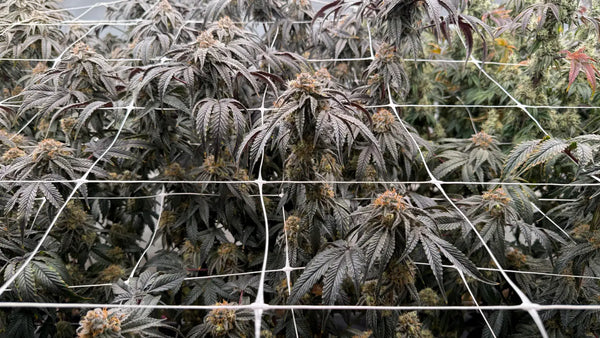
Harvest Timing: Capturing Peak THCA Windows
Precise harvest timing represents perhaps the most critical factor in THCA maximization, as cannabinoid concentrations can fluctuate dramatically during the final weeks of flowering. Understanding trichome development patterns and cannabinoid conversion pathways enables growers to capture peak THCA concentrations before degradation begins.
Trichome Monitoring and Development Stages
Trichome development follows predictable patterns that serve as reliable indicators for optimal harvest timing. Clear trichomes contain minimal THCA concentrations, while cloudy trichomes represent peak THCA accumulation. Amber trichomes indicate THCA degradation into CBN, signaling that the optimal harvest window has passed.
Professional THCA cultivation requires daily trichome inspection during the final 2-3 weeks of flowering, using high-quality jeweler's loupes or digital microscopes with 60-100x magnification. Different strain families exhibit varying trichome development rates, making variety-specific harvest timing protocols essential.
The distribution of trichome maturity across individual plants provides additional harvest timing indicators. Top colas typically mature faster than lower flowering sites, requiring growers to balance overall plant maturity against individual cola optimization for maximum THCA production.
Peak THCA Accumulation Windows
Research indicates that THCA concentrations typically peak during a narrow 5-7 day window, making precise timing crucial for optimization. Environmental stress during this critical period can accelerate THCA degradation, emphasizing the importance of stable greenhouse conditions during late flowering.
Temperature management becomes particularly critical during peak THCA windows, as elevated temperatures accelerate the conversion of THCA to THC through decarboxylation. Maintaining greenhouse temperatures below 75°F during final flowering stages preserves THCA concentrations while preventing premature degradation.
Light stress during peak THCA accumulation can trigger defensive responses that may actually enhance resin production, but excessive stress can damage delicate trichomes and reduce overall quality. Skilled growers often implement controlled stress techniques during this period to stimulate final resin production surges.
Multi-Stage Harvesting Strategies
Advanced THCA cultivation often employs multi-stage harvesting techniques that optimize individual cola development rather than harvesting entire plants simultaneously. This approach allows growers to capture peak THCA concentrations from different plant sections as they reach optimal maturity.
Top colas, receiving maximum light exposure, typically mature 5-10 days before lower flowering sites. Harvesting these premium sections at peak THCA concentrations while allowing lower sites additional development time maximizes overall quality and yield.
The logistical complexity of multi-stage harvesting requires careful planning and additional labor investment, but the quality improvements often justify the extra effort. This technique proves particularly valuable for high-value THCA products where maximizing quality takes precedence over operational efficiency.
Drying and Curing: Preservation of THCA Content
Post-harvest processing critically impacts final THCA concentrations, with improper drying and curing techniques capable of degrading even perfectly timed harvests. Greenhouse best practices extend beyond cultivation into sophisticated post-harvest protocols that preserve and potentially enhance THCA content.
Controlled Drying Environments
Temperature control during drying directly impacts THCA preservation, with optimal ranges between 60-65°F preventing excessive decarboxylation while maintaining adequate drying rates. Higher temperatures, while accelerating the drying process, risk converting THCA to THC and reducing the desired acidic cannabinoid concentrations.
Humidity management during drying requires precise control, typically maintaining 55-60% relative humidity throughout the process. Lower humidity levels accelerate drying but may cause excessive trichome brittleness, while higher humidity risks mold development that can destroy entire harvests.
Airflow patterns within drying environments should provide gentle, consistent air movement without directly impacting hanging flowers. Direct airflow can cause uneven drying patterns and excessive trichome loss, reducing both THCA content and overall quality.
Curing Protocols for THCA Optimization
The curing process continues cannabinoid development and can actually enhance THCA concentrations through continued enzymatic activity. Proper curing maintains flower moisture content between 58-62%, creating optimal conditions for beneficial enzymatic processes while preventing mold development.
Temperature stability during curing proves crucial, with optimal ranges between 60-65°F. Temperature fluctuations can trigger condensation within storage containers, creating microclimates that encourage mold growth while disrupting the controlled curing environment.
Container selection impacts curing success, with glass jars providing superior moisture control and minimal off-gassing compared to plastic alternatives. Container sizing should accommodate flower volume while leaving 20-25% headspace for proper air circulation during burping cycles.
Long-Term THCA Preservation
Extended storage requires specialized techniques to prevent THCA degradation over time. Light exposure represents one of the primary degradation factors, making light-proof storage containers essential for maintaining THCA concentrations during long-term storage.
Oxygen exposure accelerates THCA oxidation, making vacuum-sealed storage or nitrogen-flushed containers valuable for extended preservation. These techniques can maintain THCA concentrations for months beyond traditional storage methods.
Temperature stability during storage proves critical, with cooler temperatures significantly extending THCA shelf life. Many commercial operations utilize refrigerated storage at 35-40°F for long-term preservation, though this requires careful moisture management to prevent condensation issues.
Advanced Techniques: Pushing THCA Production Limits
Cutting-edge cultivation techniques push THCA production beyond traditional limits through environmental manipulation, stress protocols, and emerging technologies. These advanced approaches require sophisticated equipment and expert implementation but can achieve remarkable results for premium applications.
CO2 Supplementation for Enhanced Photosynthesis
Carbon dioxide supplementation dramatically enhances photosynthetic rates, providing the energy foundation for increased THCA production. Optimal CO2 concentrations range from 1200-1500 PPM during peak photosynthetic periods, requiring sophisticated monitoring and delivery systems.
The relationship between CO2 supplementation and THCA production involves complex metabolic pathways that convert increased photosynthetic energy into enhanced resin production. Research indicates that proper CO2 supplementation can increase THCA concentrations by 15-25% compared to ambient conditions.
Implementation timing proves crucial, with CO2 supplementation most effective during peak light periods when photosynthetic activity reaches maximum levels. Nighttime CO2 supplementation provides minimal benefits while increasing operational costs unnecessarily.
UV Exposure for Resin Stimulation
Controlled UV exposure triggers plant defense mechanisms that stimulate additional resin production as protection against radiation damage. UVB radiation, in particular, has shown significant promise for enhancing THCA production when applied during specific flowering stages.
The optimal UV exposure protocol involves brief exposure periods (15-30 minutes) during mid-flowering, gradually increasing exposure duration as plants develop tolerance. Excessive UV exposure can damage plants and actually reduce THCA production, making precise control essential.
UV implementation requires specialized equipment and safety protocols, as the radiation levels beneficial for plants can be harmful to humans. Many successful programs utilize automated UV delivery systems that minimize human exposure while providing consistent plant treatment.
Controlled Stress Training Techniques
Strategic stress application during specific development phases can stimulate enhanced resin production through plant defense responses. Techniques include controlled drought stress, temperature manipulation, and mechanical stress that triggers increased THCA synthesis.
Temperature differential stress, involving controlled day/night temperature variations, has shown particular promise for THCA enhancement. Implementing 10-15°F temperature drops during dark periods can stimulate stress responses that increase resin production.
The timing of stress application proves critical, with most effective protocols implemented during mid to late flowering when THCA synthesis rates reach peak levels. Early stress application may impact plant development, while late stress can reduce overall quality.
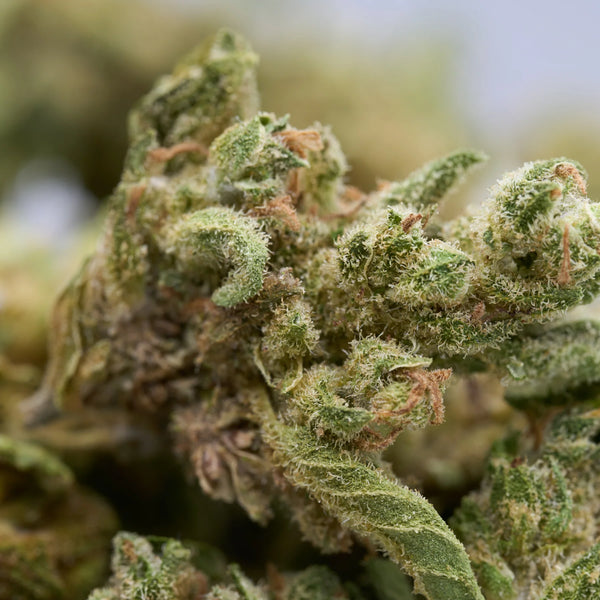
Quality Testing: Monitoring and Verification
Comprehensive quality testing programs enable data-driven optimization and provide verification of THCA maximization efforts. Modern testing protocols combine rapid field testing with laboratory analysis to create feedback loops that continuously improve cultivation practices.
Field Testing Protocols
Rapid field testing enables real-time monitoring of THCA development throughout the cultivation cycle. Portable testing devices can provide preliminary THCA measurements within minutes, allowing growers to adjust protocols based on plant response patterns.
Sample collection timing and techniques significantly impact testing accuracy. Multiple samples from different plant sections provide more representative results than single-point sampling, while consistent collection timing enables accurate trend analysis.
Documentation protocols should record testing results alongside environmental conditions, nutritional inputs, and cultivation techniques. This comprehensive data collection enables correlation analysis that identifies optimization opportunities and best practices.
Laboratory Verification Methods
Professional laboratory analysis provides definitive THCA quantification using sophisticated analytical techniques such as HPLC and gas chromatography. These methods offer precision levels impossible with field testing while providing comprehensive cannabinoid profiles.
Sample preparation for laboratory analysis requires careful handling to prevent THCA degradation during transport and storage. Flash freezing immediately after collection preserves THCA concentrations, while proper packaging prevents sample deterioration.
Chain of custody protocols ensure sample integrity and testing reliability, particularly important for commercial operations requiring regulatory compliance. Proper documentation and handling procedures protect against sample contamination and testing discrepancies.
Continuous Improvement Programs
Data analysis and trending identify optimization opportunities that might not be apparent from individual testing sessions. Statistical analysis of testing results correlated with cultivation variables reveals patterns that enable systematic improvement.
Benchmarking against industry standards and competitor products provides context for THCA production achievements. Regular comparative analysis identifies areas for improvement while validating successful optimization efforts.
Implementation of testing feedback requires systematic approach modification based on analytical results. Successful programs establish protocols for incorporating testing insights into cultivation practices, creating continuous improvement cycles.
Implementation Roadmap: Your Path to THCA Excellence
Successfully implementing comprehensive THCA maximization requires systematic planning, phased implementation, and continuous refinement. This roadmap provides structured approach for transforming theoretical knowledge into practical cultivation excellence.
Phase 1: Foundation Development (Weeks 1-4)
Initial assessment of existing cultivation systems identifies optimization opportunities and infrastructure requirements. Comprehensive facility evaluation covers environmental controls, lighting systems, and monitoring capabilities necessary for THCA maximization.
Genetics acquisition and testing establish the foundation for high THCA production. Sourcing proven high THCA strains while implementing testing protocols for genetic verification ensures optimal starting materials for cultivation programs.
Basic monitoring systems implementation includes environmental sensors, nutrient monitoring equipment, and documentation protocols. These foundational systems provide the data collection capabilities necessary for optimization and quality control.
Phase 2: System Optimization (Weeks 5-12)
Environmental control refinement focuses on achieving optimal temperature, humidity, and airflow patterns for THCA production. Fine-tuning existing systems while upgrading components as necessary creates the controlled environment foundation for success.
Nutritional program development involves testing feeding schedules, nutrient concentrations, and supplementation protocols. Systematic testing of different approaches identifies optimal nutrition strategies for specific genetics and environmental conditions.
Training technique implementation begins with basic LST and pruning protocols while advancing toward more sophisticated techniques such as SCROG and selective breeding. Gradual skill development ensures successful implementation without risking crop loss.
Phase 3: Advanced Implementation (Weeks 13-24)
Sophisticated techniques implementation includes CO2 supplementation, UV exposure protocols, and controlled stress training. These advanced approaches require additional equipment investment and refined operational skills.
Quality testing program establishment creates feedback loops for continuous optimization. Regular testing schedules combined with data analysis protocols enable systematic improvement and verification of optimization efforts.
Harvest and post-harvest protocol refinement ensures that cultivation excellence translates into final product quality. Sophisticated drying, curing, and storage techniques preserve and potentially enhance THCA concentrations achieved through cultivation optimization.
Phase 4: Continuous Refinement (Ongoing)
Data analysis and optimization continue throughout all cultivation cycles, with each harvest providing opportunities for improvement. Systematic evaluation of results against protocols enables continuous refinement of techniques and approaches.
Technology integration keeps pace with advancing cultivation science, incorporating new tools and techniques that enhance THCA production capabilities. Regular evaluation of emerging technologies ensures competitive advantages and operational efficiency.
Market feedback integration connects cultivation optimization with consumer preferences and market demands. Understanding how THCA maximization impacts end-user satisfaction guides optimization priorities and development focus.
Conclusion: Mastering the Art and Science of THCA Maximization
The pursuit of maximum THCA content represents the convergence of horticultural science, environmental engineering, and botanical expertise. Success requires mastery of multiple disciplines combined with systematic implementation of proven techniques and continuous adaptation to emerging knowledge.
Modern greenhouse growing techniques provide unprecedented opportunities for THCA optimization through precise environmental control and sophisticated cultivation protocols. The integration of genetics, nutrition, training, harvest timing, and post-harvest processing creates synergistic effects that push THCA production beyond traditional limits.
The investment in comprehensive THCA maximization programs pays dividends through enhanced product quality, increased market value, and superior therapeutic efficacy. As consumer awareness of THCA benefits continues growing, producers who master these techniques will maintain competitive advantages in increasingly sophisticated markets.
Future developments in cultivation science promise even greater opportunities for THCA optimization. Emerging technologies, improved genetics, and deeper understanding of cannabinoid synthesis pathways will continue expanding the possibilities for cultivation excellence.
The journey toward THCA mastery requires commitment, patience, and systematic approach to implementation. Success comes through careful attention to detail, continuous learning, and adaptation to plant responses. Each cultivation cycle provides opportunities for refinement and improvement, building expertise that translates directly into superior product quality.
For cultivators ready to embrace the challenge of THCA maximization, the rewards extend far beyond increased cannabinoid concentrations. The pursuit of excellence drives innovation, builds expertise, and creates sustainable competitive advantages that benefit both producers and consumers in the evolving cannabis marketplace.
Frequently Asked Questions
Q: How long does it take to see improvements in THCA content using these techniques?
A: Most growers observe measurable THCA improvements within one complete growing cycle (12-16 weeks) when implementing basic optimization techniques. Advanced techniques may require 2-3 cycles for full optimization as you refine protocols and adapt to plant responses. Environmental control improvements often show immediate benefits, while genetic optimization and advanced training techniques build results over multiple harvests.
Q: What's the difference between THCA and THC in terms of cultivation optimization?
A: THCA is the acidic precursor to THC and doesn't convert to psychoactive THC until heated (decarboxylated). Cultivation techniques for maximizing THCA content focus on preserving the acidic form through careful temperature control and proper harvest timing. THC-focused cultivation may actually work against THCA preservation, as heat stress and late harvesting convert THCA to THC.
Q: Can I implement these techniques in a small personal greenhouse?
A: Absolutely! Many THCA optimization techniques scale effectively for home greenhouses. Start with strain selection, basic environmental monitoring, and simple training techniques like LST. You can achieve significant improvements without expensive equipment by focusing on genetics, nutrition timing, and proper harvest protocols. Advanced techniques like CO2 supplementation can be added as your experience and budget allow.
Q: How do I know if my greenhouse environment is suitable for THCA maximization?
A: Key indicators include consistent temperature control (65-75°F during day, 60-65°F at night), humidity management (40-50% during flowering), and adequate ventilation for air circulation. If you can maintain these basic parameters, your greenhouse can support THCA optimization. Monitoring equipment helps track conditions, but even basic thermometer/hygrometer combinations provide sufficient data for getting started.
Q: What's the most important factor for beginners focusing on THCA production?
A: Genetics selection ranks as the most critical starting point. High THCA strains provide the foundation for success, while poor genetics limit results regardless of technique quality. Focus on proven high THCA varieties and master basic environmental control before advancing to sophisticated techniques. Proper harvest timing comes second, as it directly impacts final THCA concentrations.
Q: How does greenhouse cultivation compare to indoor growing for THCA production?
A: Greenhouses offer several advantages for THCA production: natural sunlight provides fuller spectrum and higher intensity than most indoor lighting, lower operating costs allow for extended flowering periods that enhance THCA development, and natural light cycles support optimal cannabinoid synthesis. However, indoor growing provides more precise environmental control. Many commercial THCA operations prefer greenhouses for these benefits combined with proper environmental management systems.
Q: What testing equipment do I need to monitor THCA levels?
A: Start with basic field testing kits that provide rapid THCA estimates for monitoring trends throughout the growing cycle. Professional laboratory analysis provides definitive results for final verification. Portable TLC testing kits offer good compromise between cost and accuracy for ongoing monitoring. Digital microscopes for trichome inspection help time harvests for peak THCA content without requiring chemical testing.
Q: How do organic vs synthetic nutrients impact THCA production?
A: Both approaches can achieve excellent THCA results with proper implementation. Organic nutrients often support beneficial microbial activity that may enhance natural resin production, while synthetic nutrients provide precise control for optimization. Many successful THCA programs combine both approaches, using organic base nutrients with synthetic precision supplements during critical flowering phases.
Q: What common mistakes reduce THCA content in greenhouse cultivation?
A: The most common THCA-reducing mistakes include: harvesting too late (allows THCA conversion to THC), excessive heat during flowering or drying (causes decarboxylation), inadequate environmental control during final weeks, poor genetics selection, and improper storage that degrades THCA over time. Maintaining stable, cool conditions throughout cultivation and post-harvest processing prevents most THCA loss.
Q: How do I scale these techniques for commercial production?
A: Commercial scaling requires systematic implementation of monitoring systems, standardized protocols, and quality control measures. Start with pilot programs on small sections before full implementation. Invest in automated environmental controls, comprehensive testing programs, and staff training. Document all protocols for consistency across multiple growing areas. Commercial success depends on reproducibility and consistent quality rather than maximum individual plant performance.

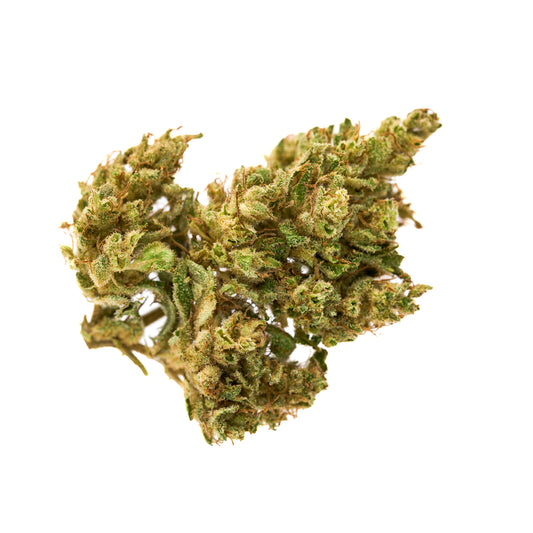
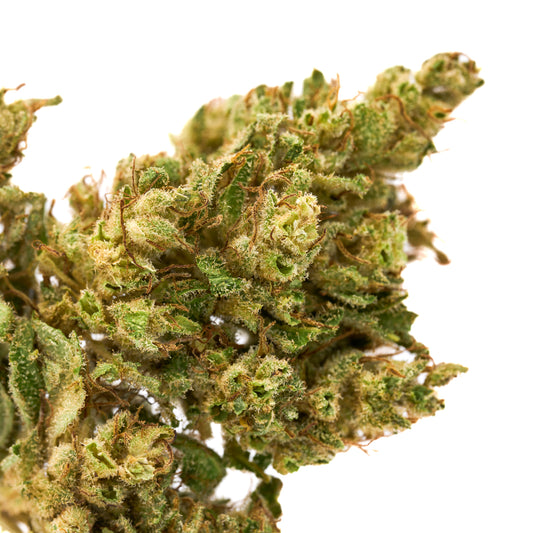
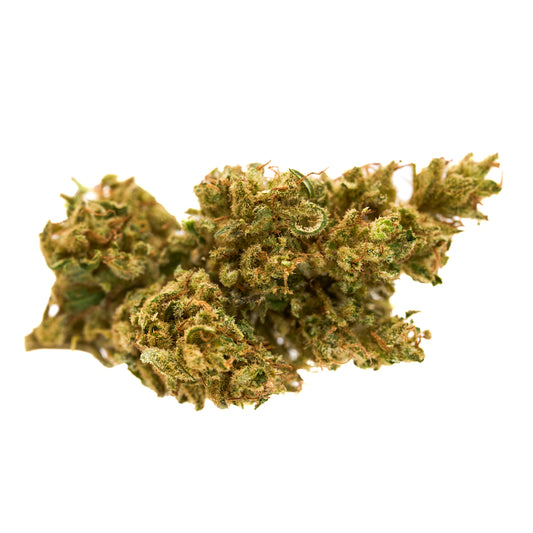
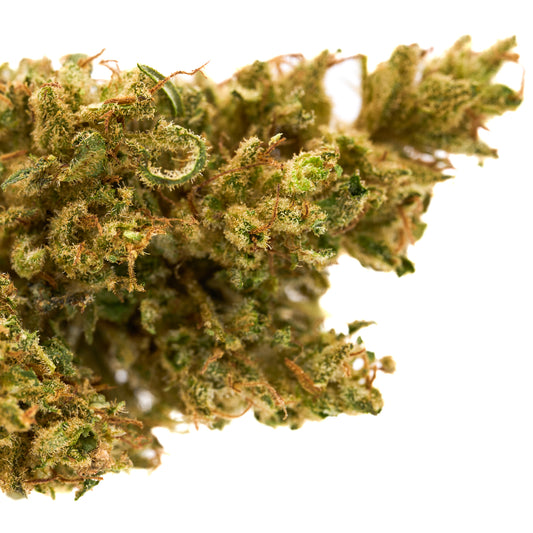
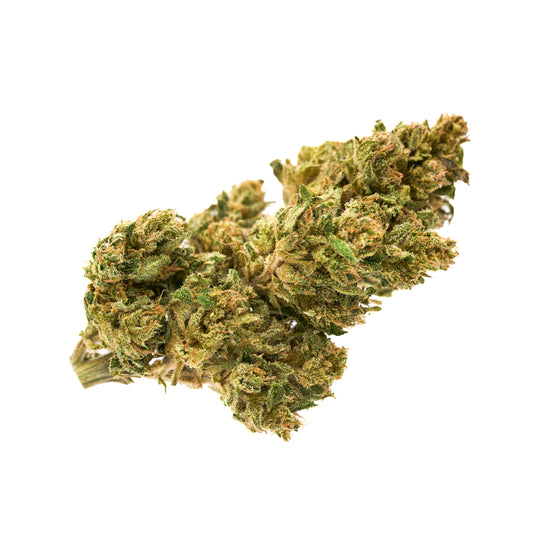
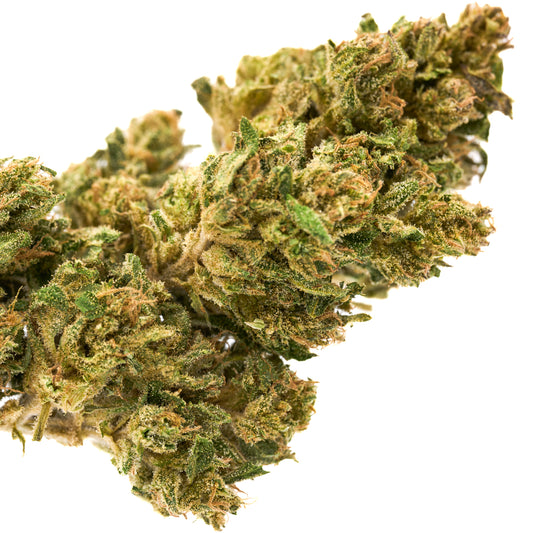



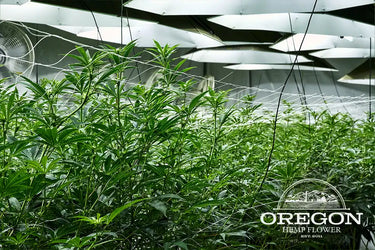

Leave a comment
Please note, comments need to be approved before they are published.